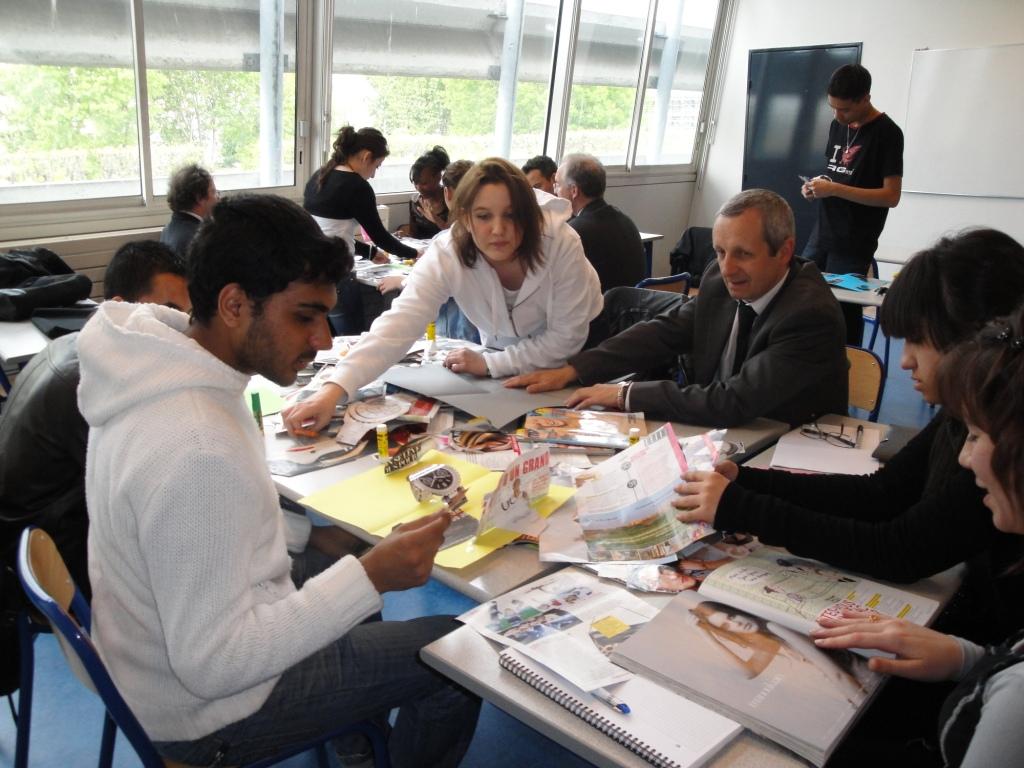Career Mentoring for Secondary Students in France (Actenses)
- Students
- Youth
- Enrollment and attendance
- Student learning
- Aspirations
- Coaching and mentoring
Researchers examined the impact of the Mentoring Assistance and Orientation program on academic achievement, job market knowledge, and career-related goals for 2,500 students in 22 high schools. Overall, the mentoring program changed student’s academic ambitions, but had no impact on their professional plans, knowledge about the professional world, or motivation for schoolwork.
Policy issue
As young teenagers students in both developed and developing countries must make important choices about whether to go on to higher education, vocational training, or enter the workforce, and these decisions can have important impacts on a student’s future career paths. In France, as in many other countries, educational attainment is strongly correlated with socioeconomic background. One study found that children of blue-collar workers were less likely to enroll in the more prestigious three-year academic track after middle school than children of white-collar workers with similar academic results.1 Students from socially disadvantaged backgrounds may face financial hardship, lack information about their prospects and options, or have less ambitious educational aspirations. It is believed that social networks and relationships can be major assets in giving students the information and motivation they need to make these decisions, but these assumptions are as of yet, untested.
Context of the evaluation
French high schools have an orientation advisor who helps students choose between different education paths, but these advisors are often unaware of the intricacies of job market fluctuations. Thus, if students lack a strong social network of professionals that can provide them with information about employers’ expectations and career paths, they can make education and career choices that do not match their expectations or capacity.
The French Education Ministry grants subsidies to schools in disadvantaged areas, which are often used to offer mentoring programs to expand students’ knowledge about the job market and employment. "Mentoring Assistance and Orientation" is one such program, provided by a non-profit volunteer organization called Actenses. Established in 2006, the program aims to provide guidance through contact with volunteer professionals in various fields. Students are assigned to a mentor in accordance with their interests. These volunteers mentor students over the three years of high school. The mentor helps the mentee determine his or her professional path by sharing information about the professional field of interest, job opportunities, and requirements for professional success. The exchange between the mentor and the mentee is designed to be complementary to the career information that is already given by the orientation adviser in the school.

Details of the intervention
Researchers examined the impact of the Mentoring Assistance and Orientation program on academic achievement, job market knowledge, and career-related goals for 2,500 students in 22 high schools.
Schools were phased into the program over a two-year period. Schools were randomly assigned to either a treatment or a comparison group. All treatment schools had one treatment class and one comparison class the first year of the evaluation and two comparison classes the second year. Symmetrically, every comparison school had two comparison classes the first year of the evaluation and one treatment class and one comparison class the second year.
Students in treatment classes were offered a mentor. Actenses organized four mentor/mentee meetings over the school year. The mentors could communicate by phone or mail with their mentees if they wished. The pairs could also meet outside of the activities organized by Actenses if they wished.
Researchers collected data from administrative records on grades, absence, and pupil behavior, and conducted surveys to measure students’ general knowledge about the professional world (types of jobs and the requirements to enter the respective fields), construction and evolution of the student's professional plans, and self-esteem.
Results and policy lessons
Overall, the mentoring program changed student’s academic ambitions but had no impact on their professional plans, knowledge about the professional world, or motivation for schoolwork.
Program implementation and take-up: Initially, the program aimed to assign a mentor to all students in treatment classes, but it was difficult to recruit mentors. During the program’s first year, 84 percent of students in treatment classes had a mentor, and during the second year, this decreased to 61 percent. Mentors and mentees met on average two times a year during the mentor/mentee meetings.
Students in treatment classes were more uncertain about their plans after high school: one year after the start of the program, 31 percent of students in treatment classes did not have a defined professional plan compared to 27 percent in comparison classes.
The mentoring program changed students’ academic ambitions: Fewer students in treatment classes chose the scientific high school track and more chose the social sciences track. They were also fewer students who expected to complete a bachelor’s degree after high school (46 percent in treatment classes compared to 50 percent in comparison classes).
The weak effects reported here may be explained by the low intensity of the intervention evaluated. Not all students had a mentor, and the mentor-mentee relationship took time to develop. One year after the start of the program, only 10 percent of mentees declared talking to their mentor about their professional future. Two years after the introduction of the program this number increased to 50 percent.
Ensuring a sufficiently large pool of mentors, and increasing the duration of the program to allow for the mentor-mentee relationship to develop, could enhance the impact of similar mentoring programs.
Duru-Bellat M., J. -P Jarousse et A. Mingat (1993) \ Les scolarités de la maternelle au lycée. Etapes et processus dans la production des inégalités sociales ? : Sur la scolarisation", Revue française de sociologie 34(1) (s. d.),43-60.

